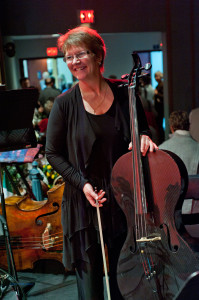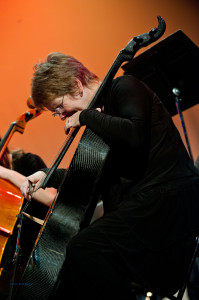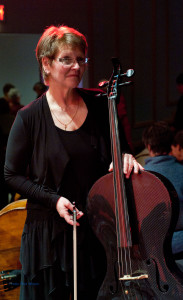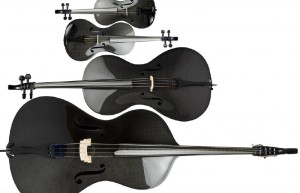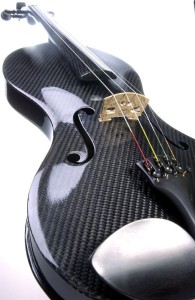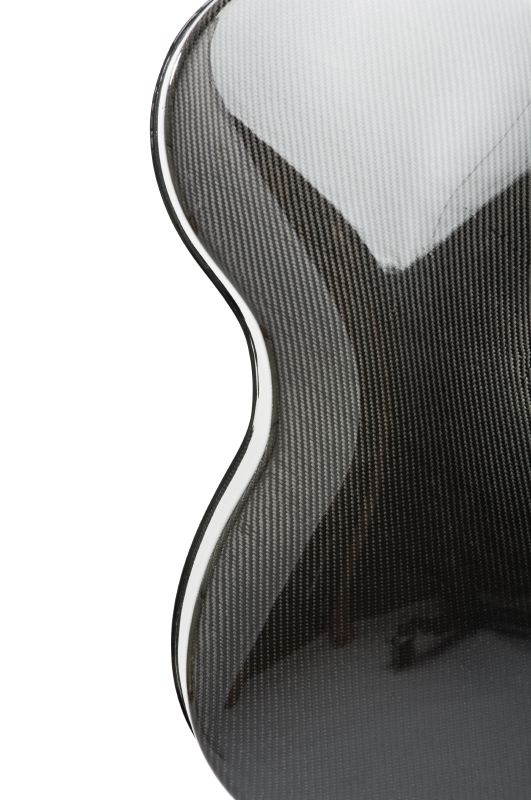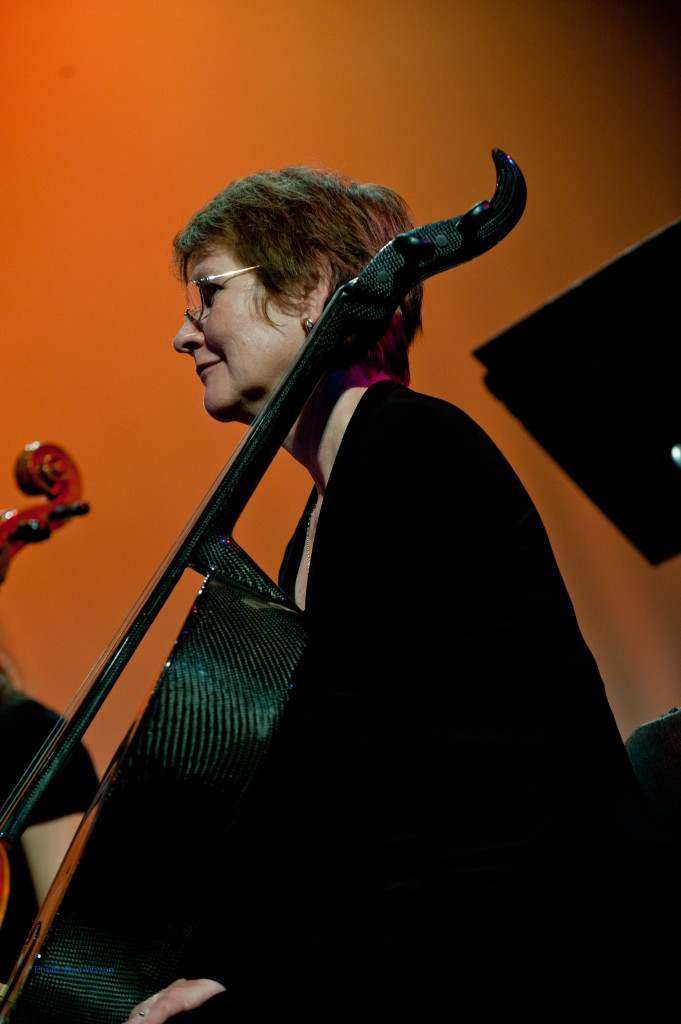 It’s a jungle out there. Or, at least a forest of wood. The over whelming view of a symphony orchestra is the string sections at the front. Sure there are other instruments in the orchestra but, like electrical wiring and plumbing, they are mostly out of sight. The prevailing color scheme is amber and brown so that the grey of Liz Tremblay’s carbon fibre cello is a not an unpleasant disruption in the traditional mosaic of a symphony orchestra. For centuries string instruments have been constructed out of wood by highly skilled artisans and high quality instruments are expected to last “for ever”. Having said that, a vintage instrument of today is not the same instrument that left the artisan’s shop hundreds of years ago. They change, mature, have accidents, are repaired and modified to preserve the sound and to stay in top condition. Wood is a renewable resource and, except for the voracious appetite for high quality “Tone Woods” for quality musical instruments, should be sustainable. Some of these woods are going into short supply and governments have been forced to enact legislation to protect endangered species. Of particular note is the threatened Brazilian Rosewood, Indian and African Ebony. The exploitation of these woods is protected by legislation and luthiers are required to only use wood from certified sources. To offset the dwindling supply of traditional tone woods builders are turning to others from lesser known species and, more recently, to the use of Carbon Fibre. The later has been used in a number of products, including guitars, for years. A musician, Luis Leguia of the Boston Symphony, who has a passion for sailing noted the strength and resonant qualities of carbon fibre boats and started experimenting with the use of that material in musical instruments. Over the years, with the help of Steve Clark, he developed a line of instruments using carbon fibre that is lighter, stronger and cheaper than the best of traditional instruments. And, against the conservative tide, they are gradually becoming accepted as instruments of choice (Luis and Clark Instruments). These are not “plastic toy” instruments; their construction and finishing still requires a high level of craftsmanship and dedication to produce an instrument that will satisfy very discerning customers. Carbon Fibre cello – part 1 Carbon Fibre cello – part 2
It’s a jungle out there. Or, at least a forest of wood. The over whelming view of a symphony orchestra is the string sections at the front. Sure there are other instruments in the orchestra but, like electrical wiring and plumbing, they are mostly out of sight. The prevailing color scheme is amber and brown so that the grey of Liz Tremblay’s carbon fibre cello is a not an unpleasant disruption in the traditional mosaic of a symphony orchestra. For centuries string instruments have been constructed out of wood by highly skilled artisans and high quality instruments are expected to last “for ever”. Having said that, a vintage instrument of today is not the same instrument that left the artisan’s shop hundreds of years ago. They change, mature, have accidents, are repaired and modified to preserve the sound and to stay in top condition. Wood is a renewable resource and, except for the voracious appetite for high quality “Tone Woods” for quality musical instruments, should be sustainable. Some of these woods are going into short supply and governments have been forced to enact legislation to protect endangered species. Of particular note is the threatened Brazilian Rosewood, Indian and African Ebony. The exploitation of these woods is protected by legislation and luthiers are required to only use wood from certified sources. To offset the dwindling supply of traditional tone woods builders are turning to others from lesser known species and, more recently, to the use of Carbon Fibre. The later has been used in a number of products, including guitars, for years. A musician, Luis Leguia of the Boston Symphony, who has a passion for sailing noted the strength and resonant qualities of carbon fibre boats and started experimenting with the use of that material in musical instruments. Over the years, with the help of Steve Clark, he developed a line of instruments using carbon fibre that is lighter, stronger and cheaper than the best of traditional instruments. And, against the conservative tide, they are gradually becoming accepted as instruments of choice (Luis and Clark Instruments). These are not “plastic toy” instruments; their construction and finishing still requires a high level of craftsmanship and dedication to produce an instrument that will satisfy very discerning customers. Carbon Fibre cello – part 1 Carbon Fibre cello – part 2
Apart from the environmental issues these instruments address a number of other significant concerns. There is the cost of course. High quality vintage instruments can be priced up into the stratosphere and are simply out of the reach of the average student and professional musician. The Luis and Clark instruments, compared to your average quality guitar (around $2,000) may seem expensive, but compared to their wooden counterparts they are at least attainable. The carbon fibre Violins and Violas are around $5,000 / $6,000, Cellos around $7,000 and the Bass is around $12,000. Wooden instruments are very susceptible to climatic conditions. Carbon fibre instruments are generally immune to dramatic variations in temperature and humidity. A touring Ontario musician reports that even in sub-zero Canadian conditions these instruments can be left over night in transport vehicles without coming to harm. When taken indoors and allowed to warm to room temperature they respond without any ill effects. This is an attribute that must have had some appeal to Symphony of the Kootenay cellist Liz Trembley. She has lived and performed in Bermuda, Ontario and Calgary so she understands the impact and dangers of climate on fine instruments. The carbon fibre cello instruments are very strong and light and the flexibility of the construction techniques allows for design modifications that improve the comfort and playability of the instruments. And, on top of all that they are stunningly beautiful with a great sound.
Here are some more images of Carbon Fibre instruments.

